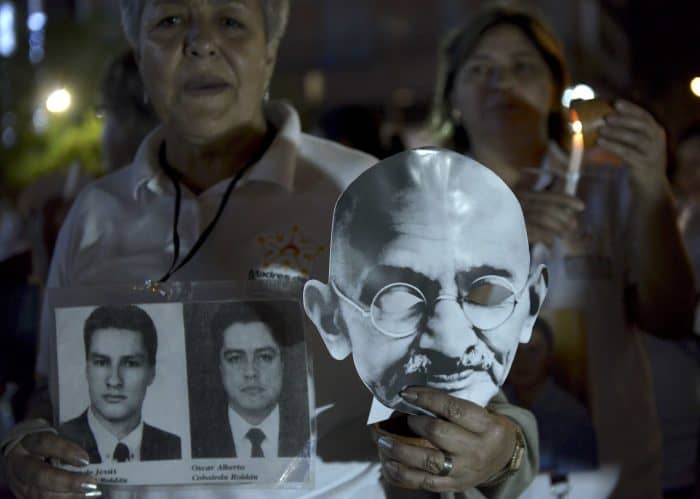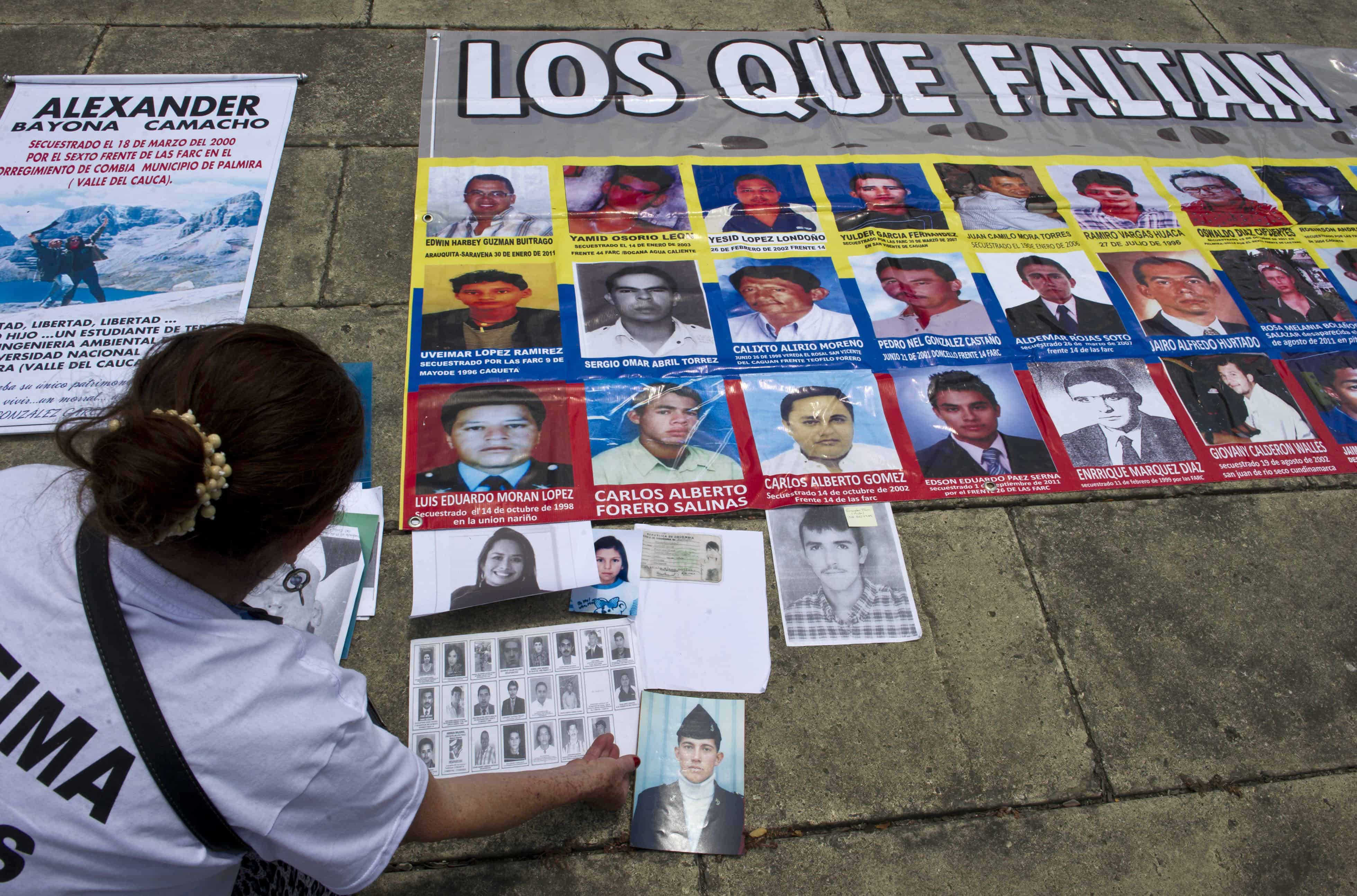BOGOTÁ, Colombia – Farmer Elver Montano has a long tale of pain and uprooting to tell as Colombia’s peace talks turns to the 5.3 million victims of Latin America’s longest armed conflict.
His eyes well with tears as he recalls the day, March 22, 2007, when a military operation forced him to abandon all his belongings in the town of El Charco.
“There were 8,500 of us who just had to run for it, during a clash between the army and the FARC,” he said.
Montano’s fate, and those of other civilian victims of the conflict, will finally get a hearing when negotiators sit down in Havana August 12 to begin discussions of how they should be compensated for their loss.
What next for peace?
It is the latest chapter in peace talks between the Revolutionary Armed Forces of Colombia (FARC) and the government that have been underway since November 2012.
The conflict has claimed the lives of more than 220,000 people since 1958, according to the National Center for Historical Record, which estimates than more than 80 percent have been civilians.
The attempt to close the book on the conflict has already reached consensus on aspects like the reintegration of the guerrillas to political life, rural development policies, and drug trafficking, which has helped fuel the conflict.
Now negotiators are turning to the thorny issue of reparations for the victims, which aim to make amends for past abuses and settle old grievances.
In Colombia, 5.3 million people have been “internally displaced” by the war, according to the U.N. High Commission on Refugees.
Representatives of various victims groups have been chosen with an eye to “balance and pluralism” to directly participate in this phase of the peace talks, beginning August 16.
“The FARC isn’t out there shooting against itself; they are at war with the state. But the ones who get hurt all the time are the civilians,” says Montano, a 60-year-old Afro-Colombian who now leads a group of displaced people from his region.
His hands calloused and voice weary, Montano ekes out a living in Guapí, a dusty town in Cauca where more than 80 percent of locals have been displaced by the war.

Reparations for whom, when?
More than 15,000 people — mostly Afro-Colombians and indigenous people — were sent fleeing for their lives in the 2007 military clash in El Charco alone.
Reparations for victims like Montano are expected to be for deaths, abductions presumed to have resulted in death, rape and loss of land among other crimes.
Montano is clear about what he wants. “No more people killed, and no more people gone missing who never come back,” he stressed.
Truth and reconciliation
Liliana Bustos’ patience ran out a long time ago.
Not knowing what happened to her father, whom the FARC kidnapped in March 2000 in Villeta when he was on his way to pay a ransom for her kidnapped brother, continues to eat away at her.
“We need to be told where they have buried our loved ones, so we can grieve once and for all,” she told AFP.
For peace to last, you have to address victims’ rights, said Christian Voelkel, a Colombia analyst with International Crisis Group.
“Reconciliation is only going to be possible if top-level parties responsible for the most serious crimes are held accountable, cooperate with a truth commission, and if victims receive some reparation,” he told AFP.
Recommended: Q&A: Behind the Colombia-FARC talks

